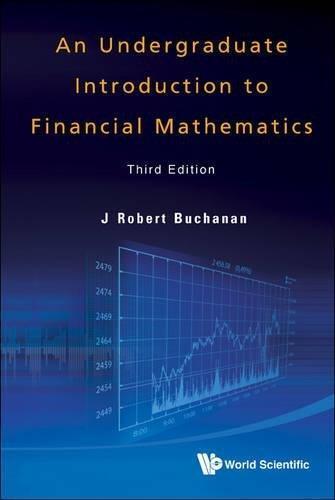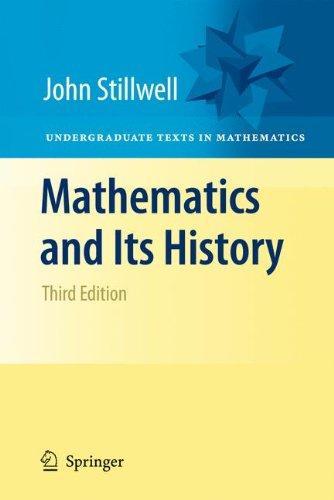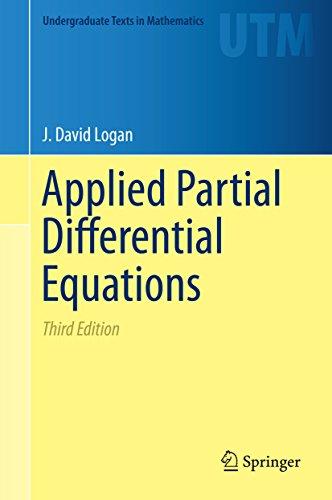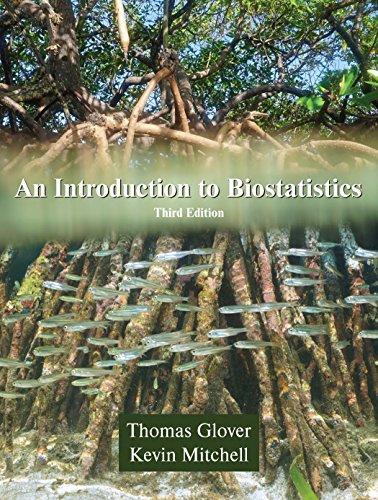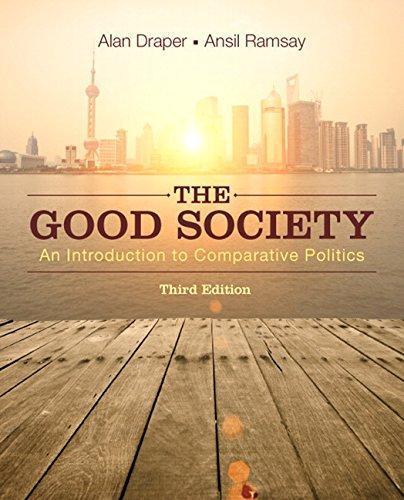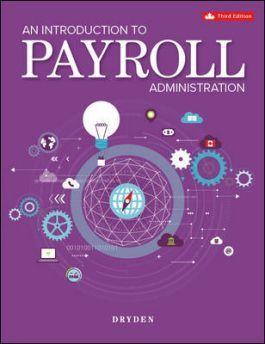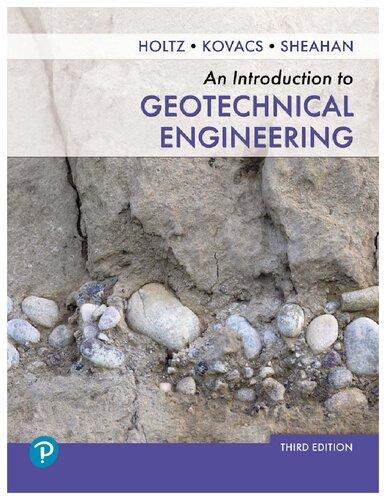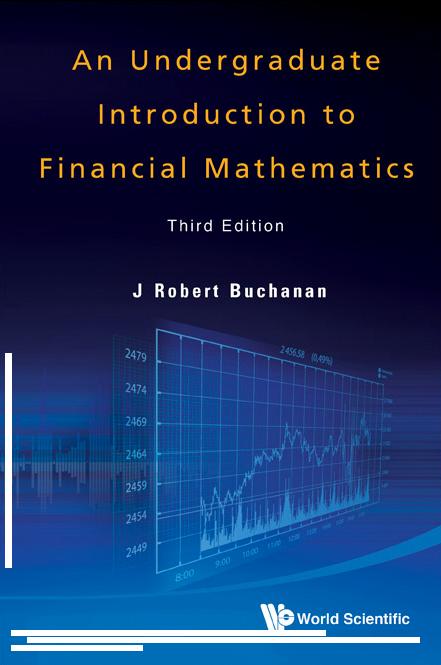PrefacetotheFirstEdition
Thisbookisintendedforanaudiencewithanundergraduatelevelofexposuretocalculusthroughelementarymultivariablecalculus.Thebook assumesnobackgroundonthepartofthereaderinprobabilityorstatistics.Oneofmyobjectivesinwritingthisbookwastocreateareadable, reasonablyself-containedintroductiontofinancialmathematicsforpeople wantingtolearnsomeofthebasicsofoptionpricingandhedging.Mydesiretowritesuchabookgrewoutoftheneedtofindanaccessiblebookfor undergraduatemathematicsmajorsonthetopicoffinancialmathematics. Ihavetaughtsuchacoursenowthreetimesandthisbookgrewoutofmy lecturenotesandreadingforthecourse.Newtitlesinfinancialmathematicsappearconstantly,sointhetimeittookmetocomposethisbookthere mayhaveappearedseveralsuperiorworksonthesubject.Knowingthe amountofworkrequiredtoproducethisbook,Istandinaweofauthors suchasthose.
Thisbookconsistsoftenchapterswhichareintendedtobereadinorder,thoughthewell-preparedreadermaybeabletoskipthefirstseveral withnolossofunderstandinginwhatcomeslater.Thefirstchapterison interestanditsroleinfinance.Bothdiscretelycompoundedandcontinuouslycompoundedinterestaretreatedthere.Thebookbeginswiththe theoryofinterestbecausethistopicisunlikelytoscareoffanyreaderno matterhowlongithasbeensincetheyhavedoneanyformalmathematics. Thesecondandthirdchaptersprovideanintroductiontotheconcepts ofprobabilityandstatisticswhichwillbeusedthroughouttheremainderofthebook.ChapterTwodealswithdiscreterandomvariablesand emphasizestheuseofthebinomialrandomvariable.ChapterThreeintroducescontinuousrandomvariablesandemphasizesthesimilaritiesand differencesbetweendiscreteandcontinuousrandomvariables.Thenor10:56:00.
An UndergraduateIntroductiontoFinancialMathematics
malrandomvariableandthecloselyrelatedlognormalrandomvariableare introducedandexploredinthelatterchapter.
Inthefourthchaptertheconceptofarbitrageisintroduced.Forreadersalreadywellversedincalculus,probability,andstatistics,thisisthe firstmaterialwhichmaybeunfamiliartothem.Theassumptionthatfinancialcalculationsarecarriedoutinan“arbitragefree”settingpervades theremainderofthebook.Thelackofarbitrageopportunitiesinfinancial transactionsensuresthatitisnotpossibletomakeariskfreeprofit.This chapterincludesadiscussionoftheresultfromlinearalgebraandoperationsresearchknownastheDualityTheoremofLinearProgramming.
Thefifthchapterintroducesthereadertotheconceptsofrandomwalks andBrownianmotion.Therandomwalkunderliesthemathematicalmodel ofthevalueofsecuritiessuchasstocksandotherfinancialinstruments whosevaluesarederivedfromsecurities.Thechoiceofmaterialtopresent andthemethodofpresentationisdifficultinthischapterduetothecomplexitiesandsubtletiesofstochasticprocesses.Ihaveattemptedtointroducestochasticprocessesinanintuitivemannerandbyconnectingelementarystochasticmodelsofsomeprocessestotheircorrespondingdeterministiccounterparts.Itˆo’sLemmaisintroducedandanelementaryproofofthis resultisgivenbasedonthemultivariableformofTaylor’sTheorem.ReaderswhoseinterestispiquedbymaterialinChapterFiveshouldconsultthe bibliographyforreferencestomorecomprehensiveanddetaileddiscussions ofstochasticcalculus.
ChapterSixintroducesthetopicofoptions.BothEuropeanandAmericanstyleoptionsarediscussedthoughtheemphasisisonEuropeanoptions. PropertiesofoptionssuchasthePut-CallParityformulaarepresentedand justified.Inthischapterwealsoderivethepartialdifferentialequationand boundaryconditionsusedtopriceEuropeancallandputoptions.This derivationmakesuseoftheearliermaterialonarbitrage,stochasticprocessesandthePut-CallParityformula.
TheseventhchapterdevelopsthesolutiontotheBlack-ScholesPDE. Thereareseveraldifferentmethodscommonlyusedtoderivethesolution tothePDEandstudentsbenefitfromdifferentaspectsofeachderivation. ThemethodIchoosetosolvethePDEinvolvestheuseoftheFourier Transform.ThusthischapterbeginswithabriefdiscussionoftheFourier andInverseFourierTransformsandtheirproperties.Mostthree-orfoursemesterelementarycalculuscoursesincludeatleastanoptionalsection ontheFourierTransform,thusstudentswillhavethecalculusbackground necessarytofollowthisdiscussion.ItalsoprovidesexposuretotheFourier
TransformforstudentswhowillbelatertakingacourseinPDEsand moreimportantlyexposureforstudentswhowillnottakesuchacourse. AftercompletingthisderivationoftheBlack-Scholesoptionpricingformula studentsshouldalsoseekoutotherderivationsintheliteratureforthe purposesofcomparison.
ChapterEightintroducessomeofthecommonlydiscussedpartial derivativesoftheBlack-Scholesoptionpricingformula.Thesepartial derivativeshelpthereadertounderstandthesensitivityofoptionprices tomovementsintheunderlyingsecurity’svalue,therisk-freeinterestrate, andthevolatilityoftheunderlyingsecurity’svalue.Thecollectionofpartialderivativesintroducedinthischapteriscommonlyreferredtoas“the Greeks”bymanyfinancialpractitioners.TheGreeksareusedintheninth chapteronhedgingstrategiesforportfolios.Hedgingstrategiesareusedto protectthevalueofaportfolioagainstmovementsintheunderlyingsecurity’svalue,therisk-freeinterestrate,andthevolatilityoftheunderlying security’svalue.Mathematicallythehedgingstrategiesremovesomeofthe lowordertermsfromtheBlack-Scholesoptionpricingformulamakingit lesssensitivetochangesinthevariablesuponwhichitdepends.Chapter Ninewilldiscussandillustrateseveralexamplesofhedgingstrategies.
ChapterTenextendstheideasintroducedinChapterNinebymodelingtheeffectsofcorrelatedmovementsinthevaluesofinvestments.The tenthchapterdiscussesseveraldifferentnotionsofoptimalityinselecting portfoliosofinvestments.Someoftheclassicalmodelsofportfolioselection areintroducedinthischapterincludingtheCapitalAssetsPricingModel (CAPM)andtheMinimumVariancePortfolio.
Itistheauthor’shopethatstudentswillfindthisbookausefulintroductiontofinancialmathematicsandaspringboardtofurtherstudyinthis area.Writingthisbookhasbeenhard,butintellectuallyrewardingwork.
Duringthesummerof2005adraftversionofthismanuscriptwasused bytheauthortoteachacourseinfinancialmathematics.Theauthoris indebtedtothestudentsofthatclassforfindingnumeroustypographical errorsinthatearlierversionwhichwerecorrectedbeforethecameraready copywassenttothepublisher.TheauthorwishestothankJillBachstadt, JasonBuck,MarkElicker,KellyFlynn,JenniferGomulka,NicoleHundley, AliciaKasif,StephenKluth,PatrickMcDevitt,JessicaPaxton,Christopher Rachor,TimothyRefi,PamelaWentz,JoshuaWise,andMichaelZrncic.
Alistoferrataandotherinformationrelatedtothisbookcanbefound atawebsiteIcreated: 10:56:00.
xiv An UndergraduateIntroductiontoFinancialMathematics
http://banach.millersville.edu/∼bob/book/
Pleasefeelfreetoshareyourcomments,criticism,and(Ihope)praisefor thisworkthroughtheemailaddressthatcanbefoundatthatsite.
J.RobertBuchanan Lancaster,PA,USA October31,2005 10:56:00.
AbouttheAuthor
J.RobertBuchananisaProfessorintheDepartmentofMathematics at MillersvilleUniversityofPennsylvania.HereceivedhisPh.D.inapplied mathematicsfromNorthCarolinaStateUniversityin1993.Sincehisundergraduatedays,hehashadakeeninterestinapplicationsofmathematics inphysics,biology,economicsandfinance.Teachingapplicationsofmathematicsandmakingadvancedmathematicsaccessibletoundergraduate studentsishisprofessionalgoal.Inhissparetime,heenjoysmathematical puzzlesandchallenges.
TheTheoryofInterest
Oneofthefirsttypesofinvestmentsthatpeoplelearnaboutissomevariationonthesavingsaccount.Inexchangeforthetemporaryuseofan investor’smoney,abankorotherfinancialinstitutionagreestopay interest,apercentageoftheamountinvested,totheinvestor.Thereare manydifferentschemesforpayinginterest.Inthischapterwewilldescribe someofthemostcommontypesofinterestandcontrasttheirdifferences. Alongthewaythereaderwillhavetheopportunitytorenewtheiracquaintanceshipwithexponentialfunctionsandthegeometricseries.Sincean amountofcapitalcanbeinvestedandearninterestandthusnumerically increaseinvalueinthefuture,theconceptof presentvalue willbeintroduced.Presentvalueprovidesawayofcomparingvaluesofinvestments madeatdifferenttimesinthepast,present,andfuture.Asanapplication ofpresentvalue,severalexamplesofsavingforretirementandcalculation ofmortgageswillbepresented.Sometimesinvestmentspaytheinvestor varyingamountsofmoneywhichchangeovertime.Theconceptof rate ofreturn canbeusedtoconvertthesepaymentsineffectiveinterestrates, makingcomparisonofinvestmentseasier.
1.1SimpleInterest
Inexchangefortheuseofadepositor’smoney,bankspayafractionof theaccountbalancebacktothedepositor.Thisfractionalpaymentis knownas interest.Themoneyabankusestopayinterestisgenerated byinvestmentsandloansthatthebankmakeswiththedepositor’smoney. Interestispaidinmanycasesatspecifiedtimesoftheyear,butnearly alwaysthefractionofthedepositedamountusedtocalculatetheinterest iscalledthe interestrate andisexpressedasapercentagepaidperyear. 10:56:51.
Forexample,acreditunionmaypay6%annuallyonsavingsaccounts. Thismeansthatifasavingsaccountcontains$100now,thenexactlyone yearfromnowthebankwillpaythedepositor$6(whichis6%of$100) providedthedepositormaintainsanaccountbalanceof$100fortheentire year.
Inthischapterandthosethatfollow,interestrateswillbedenoted symbolicallyby r.Tosimplifytheformulasandmathematicalcalculations, when r isuseditwillbeconvertedtodecimalformeventhoughitmay stillbereferredtoasapercentage.The6%annualinterestratementioned abovewouldbetreatedmathematicallyas r =0.06peryear.Theinitially depositedamountwhichearnstheinterestwillbecalledthe principal amount andwillbedenoted P .Thesumoftheprincipalamountandany earnedinterestwillbecalledthe capital orthe amountdue.Thesymbol A willbeusedtorepresenttheamountdue.Thereadermayevenseethe amountduereferredtoasthe compoundamount,thoughthisuseof theadjective“compound”isindependentofitsuseintheterm“compound interest”tobeexploredinSection1.2.Therelationshipbetween P , r,and A forasingleyearperiodis
Ingeneral,ifthetimeperiodofthedepositis t yearsthentheamountdue isexpressedintheformula
Thisimpliesthattheaverageaccountbalancefortheperiodofthedeposit is P andwhenthebalanceiswithdrawn(ortheaccountisclosed),the principalamount P plustheinterestearned Prt isreturnedtotheinvestor. Nointerestiscreditedtotheaccountuntiltheinstantitisclosed.Thisis knownasthe simpleinterest formula.
Somefinancialinstitutionscreditinterestearnedbytheaccountbalance atfixedpointsintime.Banksandotherfinancialinstitutions“pay”the depositorbyaddingtheinteresttothedepositor’saccount.Theinterest, oncepaidtothedepositor,isthedepositor’stokeep.Unlessthedepositor withdrawstheinterestorsomepartoftheprincipal,theprocessbegins againforanotherinterestearningperiod.If P isinitiallydeposited,then afteroneyear,theamountdueaccordingtoEq.(1.1)with t =1would be P (1+ r).Thisamountcanbethoughtofastheprincipalamountfor theaccountatthebeginningofthesecondyear.Thus,twoyearsafterthe 10:56:51.
A = P + Pr = P (1+ r)
A = P (1+ rt). (1.1)
initialdeposittheamountduewouldbe
Continuinginthiswaywecanseethat t yearsaftertheinitialdepositof anamount P ,thecapital A willgrowto
Amathematical“purist”maywishtoestablishEq.(1.2)usingtheprinciple ofinduction.
Banksandotherinterest-payingfinancialinstitutionsoftenpayinterest morethanasingletimeperyear.Theyearlyinterestformulagivenin Eq.(1.2)mustbemodifiedtotrackthecompoundamountforinterest periodsofotherthanoneyear.
1.2CompoundInterest
Thetypicalinterestbearingsavingsorcheckingaccountwillbedescribed byaninvestorasearninganominalannualinterestratecompoundedsome numberoftimesperyear.Investorswilloftenfindinterestcompounded semi-annually,quarterly,monthly,weekly,ordaily.Inthissectionwewill compareandcontrastcompoundinteresttothesimpleinterestcaseofthe previoussection.Wheneverinterestisallowedtoearninterestitself,an investmentissaidtoearn compoundinterest.Inthissituation,partof theinterestispaidtothedepositoronceormorefrequentlyperyear.Once paid,theinterestbeginsearninginterest.Wewilllet n denotethenumber ofcompoundingperiodsperyear.Forexampleforinterest“compounded monthly” n =12.Onlytwosmallmodificationstotheinterestformula inEq.(1.2)areneededtocalculatethecompoundinterest.First,itis nownecessarytothinkoftheinterestratepercompoundingperiod.Ifthe annualinterestrateis r,thentheinterestratepercompoundingperiod is r/n.Second,theelapsedtimeshouldbethoughtofassomenumberof compoundingperiodsratherthanyears.Thus,with n compoundingperiods peryear,thenumberofcompoundingperiodsin t yearsis nt.Therefore, theformulaforcompoundinterestis
Eq.(1.3)simplifiestotheformulafortheamountduegiveninEq.(1.2) when n =1.
Example1.1 Supposeanaccountearns5.75%annuallycompounded monthly.Iftheprincipalamountis$3104thenafterthreeandone-half yearstheamountduewillbe
ThereadershouldverifyusingEq.(1.1)thatiftheprincipalinthepreviousexampleearnedonly simple interestatanannualrateof5.75%then theamountdueafter3.5yearswouldbeonly$3728.68.Thushappilyfor thedepositor,compoundinterestbuildscapitalfasterthansimpleinterest. Frequentlyitisusefultocompareanannualinterestratewithcompoundingtoanequivalentsimpleinterest, i.e. tothesimpleannualinterestrate whichwouldgeneratethesameamountofinterestastheannualcompound rate.Thisequivalentinterestrateiscalledthe effectiveinterestrate. Fortheratementionedinthepreviousexamplewecanfindtheeffective interestratebysolvingtheequation
Thus,thenominalannualinterestrateof5.75%compoundedmonthlyis equivalenttoaneffectiveannualrateof5.90%.
Ingeneral,ifthenominalannualrate r iscompounded n timesperyear theequivalenteffectiveannualrate re isgivenbytheformula:
Intuitivelyitseemsthatmorecompoundingperiodsperyearimpliesa highereffectiveannualinterestrate.Inthenextsectionwewillexplorethe limitingcaseoffrequentcompoundinggoingbeyondsemiannually,quarterly,monthly,weekly,daily,hourly, etc. tocontinuously.
1.3ContinuouslyCompoundedInterest
Mathematically,whenconsideringtheeffectonthecompoundamountof morefrequentcompounding,wearecontemplatingalimitingprocess.In 10:56:51.
symbolicformwewouldliketofindthecompoundamount A whichsatisfies theequation
Fortunately,thereisasimpleexpressionforthevalueofthelimitonthe right-handsideofEq.(1.5).Wewillfinditbyworkingonthelimit
Thislimitisindeterminateoftheform1∞.Wewillevaluateitthrougha standardapproachusingthenaturallogarithmandl’Hˆopital’sRule.The readershouldconsultanelementarycalculusbooksuchas [Smithand Minton(2002)] formoredetails.Weseethatif y =(1+ r/n)n,then ln y =ln 1+ r n n
n ln(1+ r/n) = ln(1+ r/n) 1/n
whichisindeterminateoftheform0/0as n →∞.Toapplyl’Hˆopital’sRule wetakethelimitofthederivativeofthenumeratoroverthederivativeof thedenominator.Thus
r/n
(1/n)
Thus,limn→∞ y = er.Finallywearriveattheformulafor continuously compoundedinterest,
Thisformulamayseemfamiliarsinceitisoftenpresentedastheexponential growthformulainelementaryalgebra,precalculus,orcalculus.Thequantity A hasthepropertythat A changeswithtime t atarateproportional to A itself.
Example1.2 Suppose$3585isdepositedinanaccountwhichpaysinterestatanannualrateof6.15%compoundedcontinuously.Aftertwoand 10:56:51.
onehalfyearstheprincipalplusearnedinterestwillhavegrownto
A =3585e(0 0615)(2 5) =4180.82.
Theeffectivesimpleinterestrateisthesolutiontotheequation
e0 0615 =1+ re whichimplies re ≈ 6 34%.
1.4PresentValue
Oneofthethemeswewillseemanytimesinthestudyoffinancialmathematicsisthecomparisonofthevalueofaparticularinvestmentatthe presenttimewiththevalueoftheinvestmentatsomepointinthefuture. Thisisthecomparisonbetweenthe presentvalue ofaninvestmentversus its futurevalue.Wewillseeinthissectionthatpresentandfuturevalue playcentralrolesinplanningforretirementanddeterminingloanpayments.Laterinthisbookpresentandfuturevalueswillhelpusdetermine afairpriceforstockmarketderivatives.
Thefuturevalue t yearsfromnowofaninvestedamount P subjectto anannualinterestrate r compoundedcontinuouslyis
A = Pert
Thus,bycomparisonwithEq.(1.6),thefuturevalueof P isjustthecompoundamountof P monetaryunitsinvestedinasavingsaccountearning interest r compoundedcontinuouslyfor t years.Bycontrastthepresent valueof A inanenvironmentofinterestrate r compoundedcontinuously for t yearsis
P = Ae rt .
Inotherwords,ifaninvestorwishestohave A monetaryunitsinsavings t yearsfromnowandtheycanplacemoneyinasavingsaccountearning interestatanannualrate r compoundedcontinuously,theinvestorshould deposit P monetaryunitsnow.Therearealsoformulasforfutureand presentvaluewheninterestiscompoundedatdiscreteintervals,notcontinuously.Iftheinterestrateis r annuallywith n compoundingperiods peryearthenthefuturevalueof P is A = P 1+ r n nt . 10:56:51.
ComparethisequationwithEq.(1.3).Simplealgebrashowsthenthe presentvalueof P earninginterestatrate r compounded n timesperyear for t yearsis
Example1.3 Supposeaninvestorwillreceivepaymentsattheendof thenextsixyearsintheamountsshowninthetablebelow.
If theinterestrateis3 99%compoundedmonthly,whatisthepresentvalue oftheinvestments?Assumingthefirstpaymentwillarriveoneyearfrom now,thepresentvalueisthesum
= 2003 01
Noticethatthepresentvalueofthepaymentsfromtheinvestmentisdifferentfromthesumofthepaymentsthemselves(whichis2277).
Unlessthereaderisamongtheveryfortunatefewwhocanalwayspay cashforallpurchases,youmaysomedayapplyforaloanfromabankor otherfinancialinstitution.Loansarealwaysmadeundertheassumptionsof aprevailinginterestrate(withcompounding),anamounttobeborrowed, andthelifespanoftheloan, i.e. thetimetheborrowerhastorepaythe loan.Usuallyportionsoftheloanmustberepaidatregularintervals(for example,monthly).Nowweturnourattentiontothequestionofusingthe amountborrowed,thelengthoftheloan,andtheinterestratetocalculate theloanpayment.
Averyhelpfulmathematicaltoolforansweringquestionsregarding presentandfuturevaluesisthe geometricseries.Supposewewishto findthesum
where n isapositivewholenumber.IfbothsidesofEq.(1.7)aremultiplied
An UndergraduateIntroductiontoFinancialMathematics by a andthensubtractedfromEq.(1.7)wehave
provided a =1. Nowwewillapplythistooltothetaskoffindingoutthemonthly amountofaloanpayment.Supposesomeoneborrows P topurchaseanew car.Thebankissuingtheautomobileloanchargesinterestattheannual rateof r compounded n timesperyear.Thelengthoftheloanwillbe t years.Themonthlyinstallmentcanbecalculatedifweapplytheprinciple thatthepresentvalueofallthepaymentsmademustequaltheamount borrowed.Supposethepaymentamountistheconstant x.Ifthefirst paymentmustbemadeattheendofthefirstcompoundingperiod,then thepresentvalueofallthepaymentsis
Therefore,therelationshipbetweentheinterestrate,thecompoundingfrequency,theperiodoftheloan,theprincipalamountborrowed,andthe paymentamountisexpressedinthefollowingequation.
Example1.4 Ifapersonborrows$25000forfiveyearsataninterest rateof4.99%compoundedmonthlyandmakesequalmonthlypayments, thepaymentamountwillbe x =25000(0.0499/12) 1 [1+(0.0499/12)] (12)(5) 1 =471.67.
Similarreasoningcanbeusedwhendetermininghowmuchtosavefor retirement.Supposeapersonis25yearsofagenowandplanstoretireat age65.Forthenext40yearstheyplantoinvestaportionoftheirmonthly incomeinsecuritieswhichearninterestattherateof10%compounded 10:56:51.
monthly.Afterretirementthepersonplansonreceivingamonthlypayment (anannuity)intheabsoluteamountof$1500for30years.Theamountof moneythepersonshouldinvestmonthlywhileworkingcanbedetermined byequatingthepresentvalueofalltheirdepositswiththepresentvalue ofalltheirwithdrawals.Thefirstdepositwillbemadeonemonthfrom nowandthefirstwithdrawalwillbemade481monthsfromnow.The lastwithdrawalwillbemade840monthsfromnow.Themonthlydeposit amountwillbebedenotedbythesymbol x.Thepresentvalueofallthe depositsmadeintotheretirementfundis
Meanwhile,thepresentvalueofalltheannuitypaymentsis
Thus, x ≈ 27.03dollarspermonth.Thisseemslikeasmallamountto invest,butsuchisthepowerofcompoundinterestandstartingasavings planforretirementearly.Ifthepersonwaitstenyears(i.e.,untilage35) tobeginsavingforretirement,butallotherfactorsremainthesame,then
whichimpliesthepersonmustinvest x ≈ 75.61monthly.Waitingtenyears tobeginsavingforretirementnearlytriplestheamountwhichthefuture retireemustsetasideforretirement.
Theinitialamountsinvestedareofcourseinvestedforalongerperiod oftimeandthuscontributeaproportionatelygreateramounttothefuture valueoftheretirementaccount.
Example1.5 Supposetwopersonswillretireintwentyyears.One beginssavingimmediatelyforretirementbutduetounforeseencircumstancesmustabandontheirsavingsplanafterfouryears.Theamountthey 10:56:51.
putasideduringthosefirstfouryearsremainsinvested,butnoadditional amountsareinvestedduringthelastsixteenyearsoftheirworkinglife.The otherpersonwaitsfouryearsbeforeputtinganymoneyintoaretirement savingsaccount.Theysaveforretirementonlyduringthelastsixteenyears oftheirworkinglife.Letusexplorethedifferenceinthefinalamountof retirementsavingsthateachpersonwillpossess.Forthepurposeofthis examplewewillassumethattheinterestrateis r =0 05compounded monthlyandthatbothworkerswillinvestthesameamount x,monthly. Thefirstworkerhasuponretirementanaccountwhosepresentvalueis
Thus,thesecondworkerretireswithalargeramountofretirementsavings; however,theratiooftheirretirementbalancesisonly43.423/108.102 ≈ 0 40.Thefirstworkersaves,inonlyonefifthofthetime,approximately 40%ofwhatthesecondworkersaves.
Thediscussionofretirementsavingsmakesnoprovisionforrisingprices. Theeconomicconceptof inflation isthephenomenonofthedecreasein thepurchasingpowerofaunitofmoneyrelativetoaunitamountofgoods orservices.Therateofinflation(usuallyexpressedasanannualpercentage rate,similartoaninterestrate)varieswithtimeandisafunctionofmany factorsincludingpolitical,economic,andinternationalfactors.Whilethe causesofinflationcanbemanyandcomplex,inflationisgenerallydescribed asaconditionwhichresultsfromanincreaseintheamountofmoneyin circulationwithoutacommensurateincreaseintheamountofavailable goods.Thus,relativetothesupplyofgoods,thevalueofthecurrencyis decreased.Thiscanhappenwhenwagesarearbitrarilyincreasedwithout anequalincreaseinworkerproductivity.
Wenowfocusontheeffectthatinflationmayhaveontheworkerplanningtosaveforretirement.Iftheinterestrateonsavingsis r andthe inflationrateis i wecancalculatethe inflation-adjustedrate orasitis sometimescalled,the realrateofinterest.Thisderivationwilltestyour understandingoftheconceptsofpresentandfuturevaluediscussedearlier inthischapter.Wewillletthesymbol ri denotetheinflation-adjusted 10:56:51.
interestrate [Broverman(2004)].Supposeatthecurrenttimeoneunitof currencywillpurchaseoneunitofgoods.Investedinsavings,thatoneunit ofcurrencyhasafuturevalue(inoneyear)of1+ r.Inoneyeartheunit ofgoodswillrequire1+ i unitsofcurrencyforpurchase.Thedifference
(1+
r) (1+ i)= r i
willbetherealrateofgrowthintheunitofcurrencyinvestednow.However,thisreturnonsavingwillnotbeearneduntiloneyearfromnow. Thus,wemustadjustthisrateofgrowthbyfindingitspresentvalueunder theinflationrate.Thisleadsustothefollowingformulafortheinflationadjustedinterestrate.
Notethatwheninflationislow(i issmall), ri ≈ r i andthislatterapproximationissometimesusedinplaceofthemoreaccuratevalueexpressedin Eq.(1.10).
Returningtotheearlierexampleoftheworkersavingforretirement, considerthecaseinwhich r =0.10,theworkerwillsavefor40yearsand liveonamonthlyannuitywhoseinflationadjustedvaluewillbe$1500for 30years,andtherateofinflationwillbe i =0.03fortheentirelifespanof theworker/retiree.Thus ri ≈ 0.0680.Assumingtheworkerwillmakethe firstdepositinonemonththepresentvalueofalldepositstobemadeis
164 756x.
Thepresentvalueofalltheannuitypaymentsisgivenby
15273.80.
Thus,themonthlydepositamountisapproximately$92.71.Thisisroughly fourtimesthemonthlyinvestmentamountwheninflationisignored.However,sinceinflationdoestendtotakeplaceoverthelongrun,ignoringa 3%inflationrateoverthelifetimeoftheindividualwouldmeanthatthe 10:56:51.
presentpurchasingpowerofthelastannuitypaymentwouldbe
Thisisnotmuchmoneytoliveonforanentiremonth.Retirementplanning shouldincludeprovisionsforinflation,varyinginterestrates,theperiod ofretirement,theperiodofsavings,anddesiredmonthlyannuityduring retirement.
1.5Time-VaryingInterestRates
Allofthediscussionsofarhasassumedthatinterestratesremainconstant duringthelifeofaloanoradeposit.However,interestrateschangeover timeduetoavarietyofeconomicandpoliticalfactors.Inthissection wewillextendideasofpresentandfuturevaluetohandlethecaseofa time-varyinginterestrate.
Wewillcallthecontinuouslycompoundedinterestrate r(t)(wherethe dependenceontime t isexplicit)the spotrate.Whilethebehaviorof thespotratecanbequitecomplex,forthemomentwewillassumethatit isacontinuousfunctionoftime.Assumingtheamountdueonadeposit earninginterestatthespotrate r(t)attime t is A(t)thenontheinterval from t to t+∆t wecanassumetheinterestrateremainsnear r(t)andsimple interestaccrues.Thuswemayapproximatetheamountdueat t +∆t as
Rearrangingtermsinthisapproximationproduces
Thisisanexampleofafirst-orderlinearhomogeneousdifferentialequation. Manyelementarycalculustextbooksandmostundergraduate-leveltextson ordinarydifferentialequationsdiscusssolvingthistypeofequation.Foran extensivediscussionthereaderisreferredto [SmithandMinton(2002)] or [BoyceandDiPrima(2001)].Theapproachistomultiplybothsidesof
Eq.(1.11)byanintegratingfactorandintegratewithrespectto t.Suppose wedefinetheintegratingfactoras
(t)= e
) ds
then,multiplyingbothsidesofEq.(1.11)by µ(t)allowsustowritethe following.
Integratingbothsidesfrom0to t producestheformulafortheamountdue attime t.
Thepresentvalueofamount A dueattime t underthetime-varyingscheduleofinterestrate r(
Closelyassociatedwiththedefiniteintegralofthespotrateistheaverageofthespotrateovertheinterval[0,t].Theaverageinterestratewritten as
isreferredtoasthe yieldcurve.Thus,theformulasforamountdueand presentvaluecanbewrittenas
If thespotrateisconstant,theseformulasreverttotheearlierforms.
Example1.6 Supposethespotrateis
r(t)= r1 1+ t + r2t 1+ t andfindaformulafortheyieldcurveandthepresentvalueof$1dueat time t. 10:56:51.
ByEq.(1.14)
1.6RateofReturn
Thepresentvalueofanitemisonewaytodeterminetheabsoluteworth oftheitemandtocompareitsworthtothatofotheritems.Another waytojudgethevalueofanitemwhichaninvestormayownorconsider purchasingisknownasthe rateofreturn.Ifapersoninvestsanamount P nowandreceivesanamount A onetimeunitfromnow,therateofreturn canbethoughtofastheinterestratepertimeunitthattheinvestedamount wouldhavetoearnsothatthepresentvalueofthepayoffamountisequal totheinvestedamount.Sincetherateofreturnisgoingtobethoughtof asanequivalentinterestrate,itwillbedenotedbythesymbol r.Then,by definition P = A(1+ r) 1 orequivalently r = A P 1
Example1.7 Ifyouloanafriend$100todaywiththeunderstanding thattheywillpayyouback$110inoneyear’stime,thentherateofreturn is r =0 10or10%.
Inamoregeneralsetting,apersonmayinvestanamount P nowand receiveasequenceofpositivepayoffs {A1,A2,...,An} atregularintervals. Inthiscasetherateofreturnperperiodistheinterestratesuchthatthe presentvalueofthesequenceofpayoffsisequaltotheamountinvested.In thiscase
= n i=1
i(1+ r) i . 10:56:51.
It isnotclearfromthisdefinitionthat r hasauniquevalueforallchoices of P andpayoffsequences.Definingthefunction f (r)tobe
wecanseethat f (r)iscontinuousontheopeninterval( 1, ∞).Inthelimit as r approaches 1fromtheright,thefunctionvaluesapproachpositive infinity.Ontheotherhandas r approachespositiveinfinity,thefunction valuesapproach P< 0asymptotically.ThusbytheIntermediateValue Theorem(p.108of [SmithandMinton(2002)])thereexists r∗ with 1 < r∗ < ∞ suchthat f (r∗)=0.Thereaderisencouragedtoshowthat r∗ is uniqueintheexercises.
Ratesofreturncanbeeitherpositiveornegative.If f (0) > 0, i.e.,the sumofthepayoffsisgreaterthantheamountinvestedthen r∗ > 0since f (r)changessignontheinterval[0, ∞).Ifthesumofthepayoffsisless thantheamountinvestedthen f (0) < 0andtherateofreturnisnegative. Inthiscasethefunction f (r)changessignontheinterval( 1, 0].
Example1.8 Supposeyouloanafriend$100withtheagreementthat theywillpayyouattheendofeachyearforthenextfiveyearsamounts {21, 22, 23, 24, 25}.Therateofreturnperyearisthesolutiontotheequation,
Newton’sMethod(Sec.3.2of [SmithandMinton(2002)])canbeusedto approximatethesolution r∗ ≈ 0.047.
1.7ContinuousIncomeStreams
Thetreatmentofinterest,presentvalueandfuturevaluehasfocusedon discretesumsofmoneypaidorreceivedatdistincttimesspreadthroughoutaninterval.Alargecompanymaybereceivingthousandsoreven hundredsofthousandsofpaymentsfromcustomerseachday.Withincome beingreceivedallthetime,itispreferabletothinkofthepaymentsasa continuousincomestream ratherthanasasequenceofdistinctpayments.Othersituationsinwhichitisnaturaltothinkofacontinuous incomestreamcouldbetheownerofanoilwell.Thewellproducesoil continuouslyandthusincomeisgeneratedcontinuously.Inthissectionwe 10:56:51.
16 An UndergraduateIntroductiontoFinancialMathematics
willdevelopthemeanstodeterminethepresentvalueandfuturevalueof continuousincomestreams.
Supposetheincomereceivedperunittimeisthefunction S(t).Over theshorttimeintervalfrom t to t +∆t wecanassumethat S(t)isnearly constantandthustheincomeearnedisapproximately S(t)∆t.Ifwewish todeterminethetotalincomegeneratedduringaninterval[a,b]wemay createapartitionoftheinterval
andapproximatethetotalincomeas
Inelementarycalculusthisquantityisknownasa Riemannsum.Accordingtothedefinitionofthedefiniteintegral,as n →∞ thetotalincome is
ARiemannsumcanbeusedtodeterminethepresentvalueoftheincome stream.Assumingthatthecontinuouslycompoundedinterestrateis r,the presentvalueattime t =0oftheincome S(t)∆t is e rtS(t)∆t.Therefore, thepresentvalueoftheincomestream S(t)overtheinterval[0,T ]is
Similarly,thefuturevalueat t = T oftheincomestreamis
Example1.9 Supposetheslotmachinefloorofanewcasinoisexpected tobringin$30, 000perday.Whatisthepresentvalueofthefirstyear’sslot machinerevenueassumingthecontinuouslycompoundedannualinterest rateis3.55%? 10:56:51.
UsingEq.(1.16)wehave
TheformulasforpresentvalueandfuturevalueinEq.(1.16)and(1.17) canbegeneralizedfurtherbyassumingtheinterestrateistimedependent, thoughinthesecasesthedefiniteintegralmayhavetobeapproximatedby somenumericalmethod.
1.8Exercises
(1)Supposethat$3659isdepositedinasavingsaccountwhichearns6.5% simpleinterest.Whatistheamountdueafterfiveyears?
(2)Supposethat$3993isdepositedinanaccountwhichearns4.3%interest.Whatisthecompoundamountaftertwoyearsiftheinterest iscompounded
(a)monthly?
(b)weekly?
(c)daily?
(d)continuously?
(3)Suppose$3750isinvestedtoday.Findtheamountduein8yearsif theinterestrateis
(a)1.5%simpleannualinterest, (b)1.5%effectiveannualcompoundinterest, (c)0 75%six-monthinterestcompoundedeverysixmonths, (d)0 375%three-monthinterestcompoundedeverythreemonths.
(4)Findtheeffectiveannualinterestratewhichisequivalentto8%interestcompoundedquarterly.
(5)Youarepreparingtoopenabankwhichwillacceptdepositsinto savingsaccountsandwhichwillpayinterestcompoundedmonthly. Inordertobecompetitiveyoumustmeetorexceedtheinterestpaid byanotherbankwhichpays5.25%compoundeddaily.Whatisthe minimuminterestrateyoucanpayandremaincompetitive?
(6)Supposeyouhave$1000todepositinoneoftwotypesofsavings accounts.Oneaccountpaysinterestatanannualrateof4.75%com10:56:51.
poundeddaily,whiletheotherpaysinterestatanannualrateof4.75% compoundedcontinuously.Howlongwouldittakeforthecompound amountstodifferby$1?
(7)Manytextbooksdeterminetheformulaforcontinuouslycompounded interestthroughanargumentwhichavoidstheuseofl’Hˆopital’sRule (forexample [Goldstein etal. (1999)]).BeginningwithEq.(1.5)let h = r/n.Then
andwecanfocusonfindingthelimh→0(1+ h)1/h.Showthat (1+ h)1/h = e(1/h)ln(1+h)
andtakethelimitofbothsidesas h → 0.Hint:youcanusethe definitionofthederivativeintheexponentontheright-handside.
(8)Whichofthetwoinvestmentsdescribedbelowispreferable?Assume thefirstpaymentwilltakeplaceexactlyoneyearfromnowandfurtherpaymentsarespacedoneyearapart.Assumethecontinually compoundedannualinterestrateis2.75%.
(9)Supposeyouwishtobuyahousecosting$200000.Youwillputa downpaymentof20%ofthepurchasepriceandborrowtherestfrom abankfor30yearsatafixedinterestrate r compoundedmonthly.If youwishyourmonthlymortgagepaymenttobe$1500orless,what isthemaximumannualinterestrateforthemortgageloan?
(10)Iftheeffectiveannualinterestrateis5 05%andtherateofinflation is2 02%,findthenominalannualrealrateofinterestcompounded quarterly.
(11)Confirmbydifferentiationthat
(12)UsetheMeanValueTheorem(p.235of [Stewart(1999)])toshow therateofreturndefinedbytherootofthefunctioninEq.(1.15)is unique. 10:56:51.
